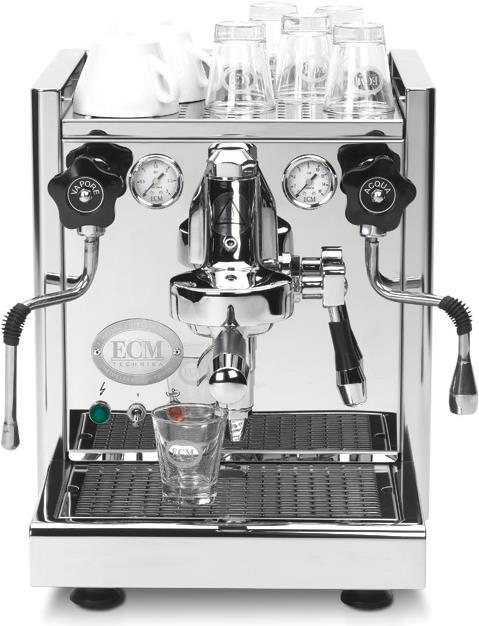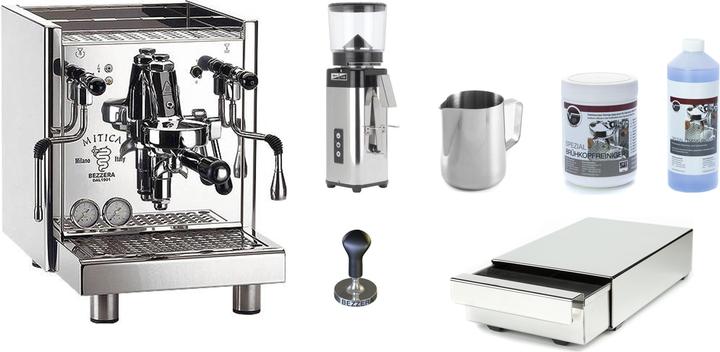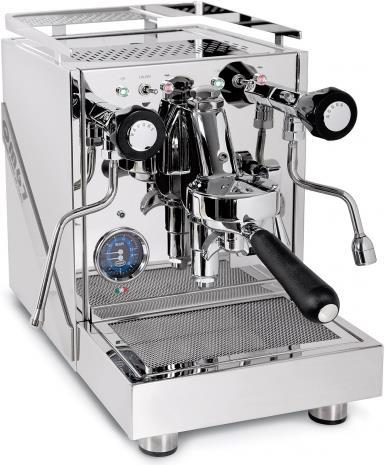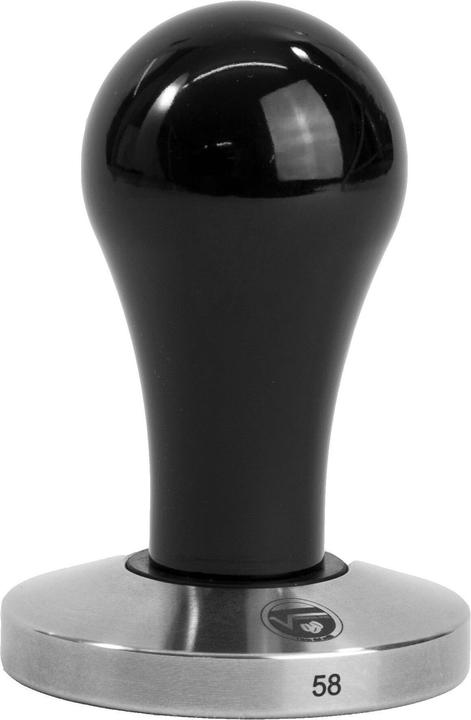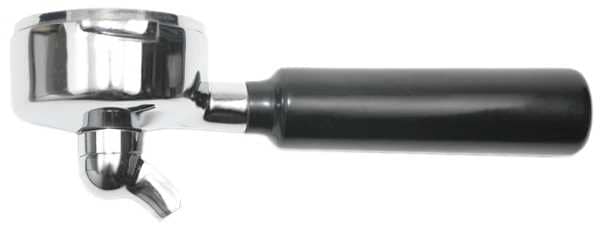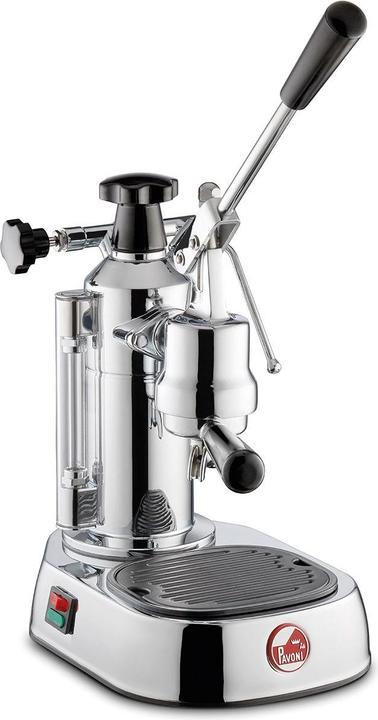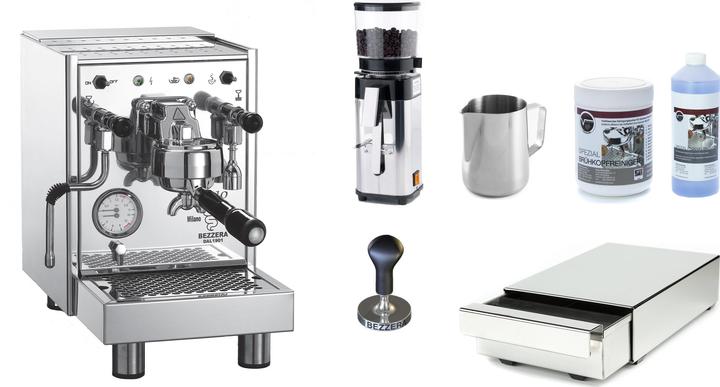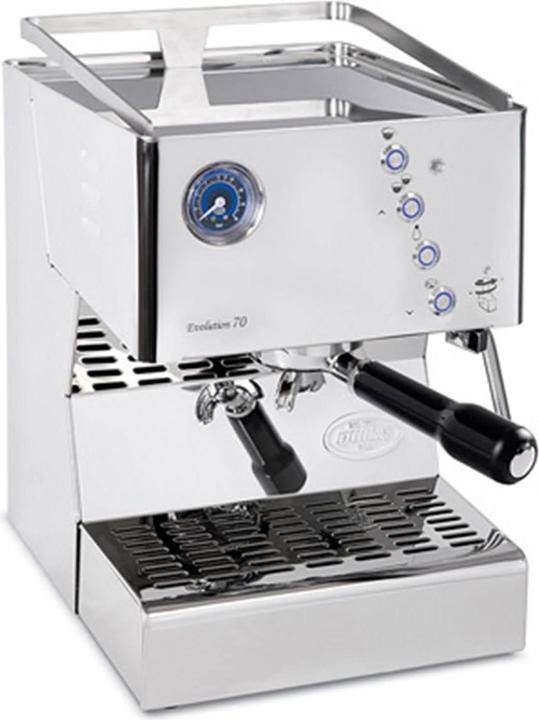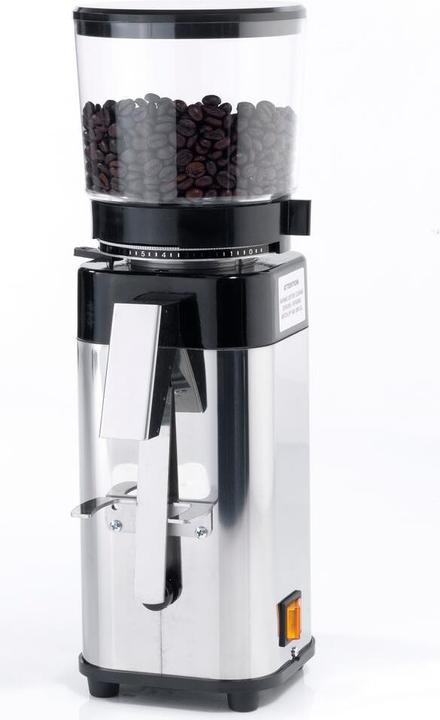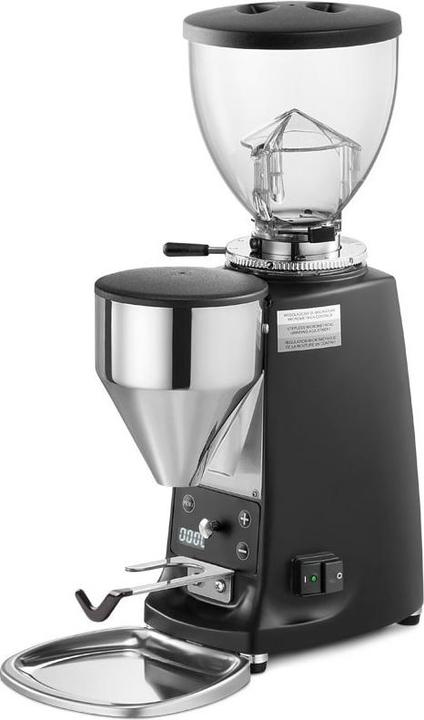
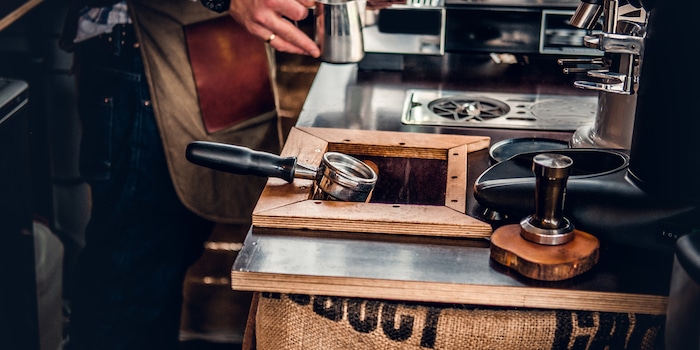
Portafilter machines: Like having your personal Italian barista
Opinions differ amongst coffee drinkers. While some prefer no nonsense capsules, others swear by the good old-fashioned portafilter machine. Rumour has it that some of our in-house coffee aficionados even go so far as to walk up a flight of stairs and right past two automatic coffee makers to get to their beloved portafilter machine. But what do you need to brew black gold at home?
Portafilter machines
Portafilter machines are designed to brew perfectly tasting coffee in the comfort of your own home. Depending on the model, they are a hybrid between a professional espresso machine used by baristas and your bog-standard automatic coffee maker designed for home use. These universal machines are operated manually or automatically and are available in many different models. Read on to find out more about the machines’ various elements and their respective functions.
What to look out for before buying
With so many to choose from, you need to consider the following aspects when shopping for a portafilter machine. Firstly, it should be able to brew the amount of espresso you need. This means that the machine’s water tank and boiler should have sufficient capacity. Entry-level machines are generally designed for making one to two espressos per brew. Some models are equipped with electronics that need to cool down before they can start building up heat and pressure to make your next coffee. This shouldn’t be a problem if you won’t be requiring more than one coffee at a time. However, if you want to brew several espressos within a short period of time, you should opt for a machine with a large capacity and get a larger portafilter machine.
Single or dual circuit machine?
When looking for that perfect portafilter machine, you’re likely to come across the terms single or dual circuit machine. these terms describe the system the machine works with.
Single circuit machine
The single circuit machine features a boiler that both brews the coffee and makes the steam. The boiler heats the water used to brew your coffee to a lower temperature than steam required to make a cappuccino, for example. In other words, preparation time for hot drinks prepared with steam is a little longer. The advantage of single circuit machines is that they are generally cheaper. If you mainly make espressos and are after a small, manageable machine, the single circuit machine will meet your needs.
Dual circuit machine
If you enjoy coffee in all shapes and forms and don’t want to miss out on frothy milk, the dual circuit machine is for you. The boiler not only provides the steam but also heats water for a heat exchanger. Fresh water is passed through a copper pipe to the heat exchanger where it is heated and piped to the portafilter. This way temperatures of around 95° C are reached during the brewing process. The advantage is evident – you can brew coffee and foam milk at the same time. Something that a single circuit machine can only do consecutively.
Dual boiler
Newer models occasionally belong to this third type. Machines with a dual boiler prepare the brewing water and the steam in separate boilers. This increases the machines’ capacity and ensures consistent pressure and temperatures as they are easier to regulate. This type of portafilter machine is ideal if you need to prepare one coffee after another.
The elements of a portafilter machine
Water tank
Even when it comes to the machine’s water supply, there are differences. Most machines feature a water tank that needs to be refilled as required. However, there are also machines out there that are directly connected to a water supply. Before making your choice, keep in mind that water quality is not only a decisive factor when it comes to flavour but also has an influence on a machine’s lifespan. If you are using hard water, a portafilter machine may suffer.
Boiler
Good espresso needs to be prepared with water heated to over 80° C. Therefore, the best materials for the boiler is brass or steel. Some machines have a boiler made of aluminium. This material is not ideal as it tends to lose heat quickly and can give your coffee a slightly metallic aftertaste.
Portafilter
The portafilter machine gets its name from the portafilter. This is where the filter is attached to during the brewing process. The filter is filled with ground coffee which is then compressed using a tamper. Following the tamping down, the filter is attached to the machine by means of a bayonet mount.
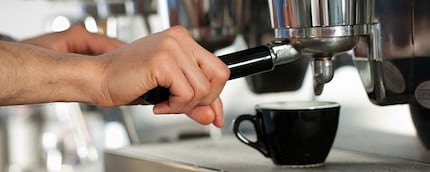
Pressure pump
Espressos are usually prepared at around nine bar. It is only under this amount of pressure that coffee beans develop the desired aromas. Some manufacturers claim that their entry-level coffee machines achieve the required pressure, yet they only do so for a brief moment and fail to maintain it for the whole cycle. Piston pump machines are particularly affected by this problem and should ideally not make your shortlist. The pump is one the machine’s most important components. The final brewing result greatly depends on it. The pump transports water from the tank or water supply to the brew head. One of its most important tasks is to ensure a powerful and even flow of hot water that runs through the portafilter. Most portafilter machines have an electric pump that creates the pressure. But machines with a lever that is operated manually are also a good option. Both versions are great for creating a real crema.
Brewing system
The brewing group forms the core of an espresso machine. It’s the bridge between the boiler and the coffee powder. The brewing system in most portafilter machines consists of two chambers in which pressure is built. Once the brewing process has ended, the pressure is channelled into a drip tray to avoid any excess pressure damaging the machine. Models that are equipped with a heat exchanger also have brew heads that stay hot. These types of machines are ready to use in no time and need no preheating time. As with the boiler, both the portafilter and the brewing group head should ideally be made of brass. This enables the water to maintain its temperature throughout all stages of the espresso making.
High-end portafilters are dominated by the brewing group E61 by Faema. It originates from the early sixties and, to this day, is still used in almost all semi-professional machines. Its main characteristic is visible from the outside: The brewing group is on the exterior of the housing and looks a little clumsy.
Crema valve
The flavour of your espresso is determined by the type of coffee bean used and the applied contact pressure. For this reason, smaller machines are usually equipped with a crema valve that is located on the portafilter. Once a certain pressure is exceeded, the valve opens and creates the desired crema. More powerful larger machines do not require a valve as they build up sufficient pressure and temperature to produce compact, persistent crema.
PID controller
An important feature of the portafilter machines is the PID controller, which controls the brewing water temperature. PID stands for “proportional integral derivative” and refers to the control unit. This control unit achieves and maintains a constant brewing temperature that works independently of the boiler volume.
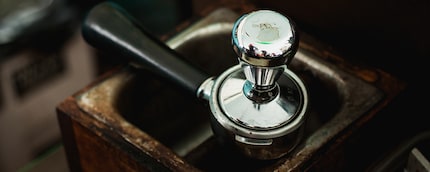
The right coffee grinder to complete your portafilter
To get a full espresso experience, freshly ground beans are a must. Only freshly ground coffee has that full and fresh aroma that is lost in pre-ground coffee. When you’re buying a coffee grinder, make sure the grinding levels can be adjusted very finely. It is often the case that espresso beans are too coarse when ground at level one and too fine when ground at level two. The coarseness of the coffee ground is a decisive factor when it comes to flavour. For beginners, a manual espresso grinder with continuously adjustable grinding levels will do.
Portafilter machines with a built-in grinder
When choosing your coffee beans, there are various things to consider. What’s most important is to adjust the grinding level, water temperature and portafilter pressure to your beans.
Friends, family, cats and good wine are my lifeblood.

